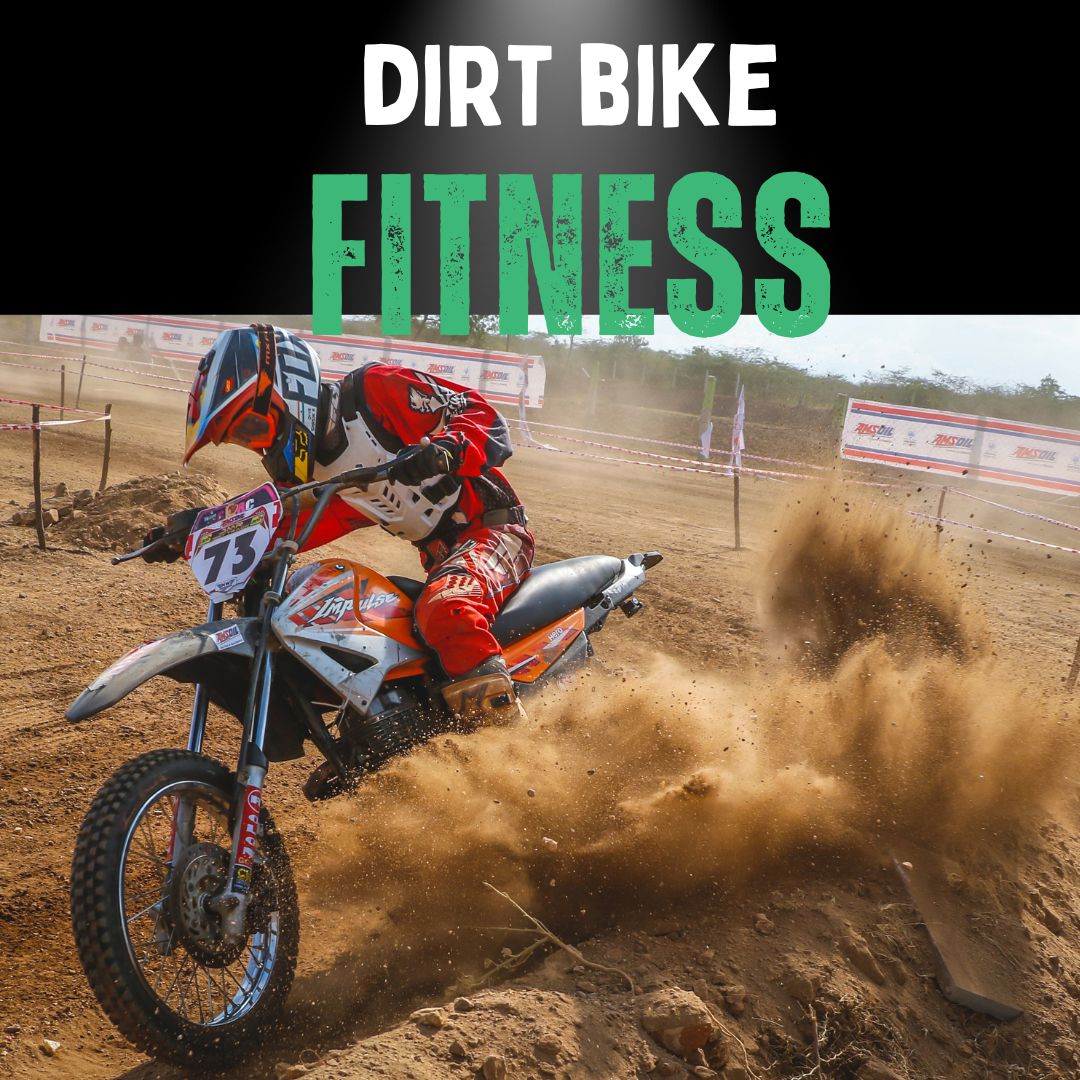
Updated: 25.4.25
Riding a dirt bike isn't just about the thrill of the ride — it's a physically demanding sport requiring strength, endurance, agility, and mental toughness.
In this complete guide, we'll explore essential training regimens, pre-ride preparation techniques, and the importance of a holistic fitness approach for dirt bike riders.
Whether you're a beginner or a seasoned pro, this article is packed with valuable insights to boost your performance and enjoyment on the trails.
Core Training Regimens for Dirt Bike Riders
Endurance and Strength Training
Building stamina through endurance exercises like cycling, running, and swimming prepares you for the rigours of long rides.
Strength training focusing on the legs, core, and upper body is crucial to maintaining control over your bike in challenging conditions.
Moto-Specific and High-Intensity Workouts
Moto-specific exercises simulate the unique demands of dirt biking. Adding High-Intensity Interval Training (HIIT) improves overall endurance and explosive strength — both vital for competitive and recreational riders.
Related: How To Get Your Child Started In Motocross
Pre-Ride Preparation and Techniques
Warm-Up and Flexibility
Warming up is essential to prevent injuries. Incorporate stretching and yoga to increase flexibility and ease of bike control.
Nutrition and Recovery
A balanced diet powers your rides, while proper recovery time ensures you’re at your best for the next adventure.
Fuel your body right and prioritise rest to enhance both stamina and safety.
Role of Hydration in Dirt Bike Fitness
Pre-Ride Hydration
Begin hydrating well before you start riding. Proper hydration sharpens your focus, boosts endurance, and keeps you safe on the track.
Hydration Packs and Electrolyte Balance
Carry a hydration pack or water bottle and sip frequently during rides. Replace lost electrolytes with drinks like Pedialyte, especially after intense sessions.
Avoid Dehydrating Substances
Skip alcohol, sodas, and excess caffeine — they promote dehydration and impair performance.
Cooling Gear
In hot weather, invest in cooling vests and breathable gear to stay cool and avoid heat exhaustion.
Fitness Training for Beginner Riders
Starting Your Fitness Journey
New to dirt biking? Start with basic strength and cardio exercises, gradually increasing intensity as your skills improve.
Benefits of Physical Training
Training boosts cardiovascular health, muscular strength, balance, and confidence, improving every aspect of your ride.
Creating a Personalised Schedule
Set realistic goals. Train 2–4 times per week depending on your skill level and lifestyle for maximum progress.
Related: Mastering Dirt Bike Jumps: Techniques and Tips
Mental Fitness and Focus in Dirt Biking
Concentration and Quick Decision-Making
Dirt biking demands total focus and lightning-fast reactions. Practice staying mentally sharp to master tight tracks and unexpected obstacles.
Building Confidence and Resilience
Each successful ride builds mental toughness and self-assurance, making every challenge more manageable.
Stress Relief
The freedom and adrenaline of dirt biking offer an incredible mental boost — it's not just fitness, it’s therapy!
Injury Prevention Techniques
Proper Gear and Stretching
Always wear a helmet, gloves, goggles, boots, chest protectors, and braces. Pre-ride stretching increases flexibility and reduces the risk of injury.
Adjusting for Weather Conditions
Be mindful of visibility and terrain conditions. Slower, more controlled rides during adverse weather can prevent accidents.
Beginner Safety Training
Learning basic safety skills is essential for new riders. Start smart to ride safe!
Common Training Mistakes to Avoid
Skipping rest days, ignoring flexibility work, and poor hydration are frequent mistakes. Stay disciplined, and listen to your body for optimal results.
Conclusion
Dirt biking demands more than just riding skills — it calls for total body fitness, mental sharpness, and strategic preparation.
By following these tips, you'll not only boost your performance but also enjoy a safer, stronger, and more exhilarating dirt biking experience!
FAQs
What age is appropriate to start physical training for dirt biking?
Kids can start training as soon as they ride! Focus on balance and coordination early, with more structured workouts as they grow.
Is cardio fitness more important than strength training?
Both are vital. Cardio boosts stamina, strength enhances control — balance both for dirt biking excellence.
Can dirt biking help with weight management?
Yes! Dirt biking is an intense calorie-burner that supports healthy weight loss when combined with a proper diet.
How can I balance dirt bike training with a busy work schedule?
Short, high-intensity workouts and weekend rides can keep your fitness on track even with a packed calendar.
Ready to Take Your Dirt Bike Skills to the Next Level? 🏍️
Start building strength, boosting stamina, and sharpening your focus today! If you’re looking for the perfect starter bike for your young rider, check out our latest collection.








Share:
How Can Girls Get Into Dirt Biking in 2025?
Role of Hydration in Dirt Bike Fitness